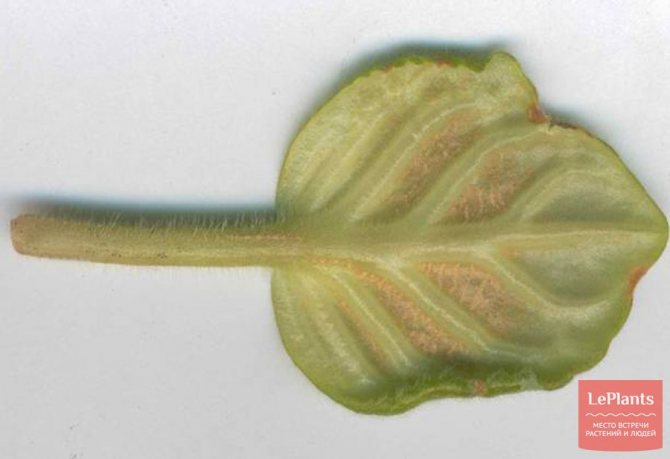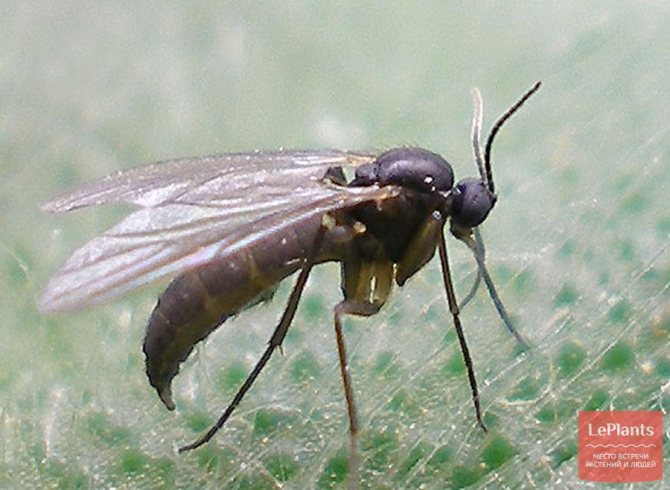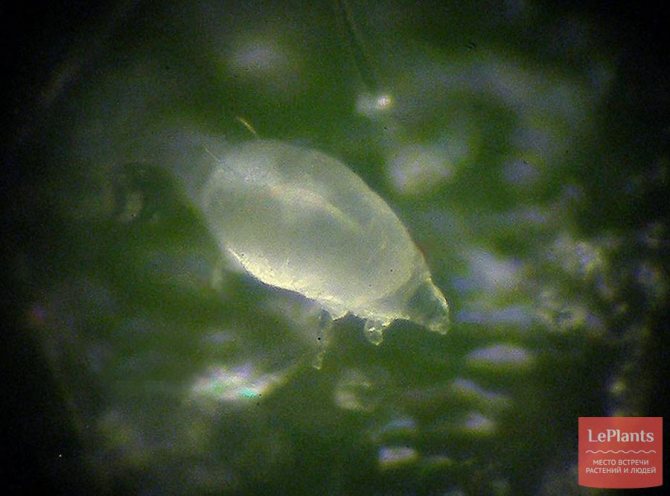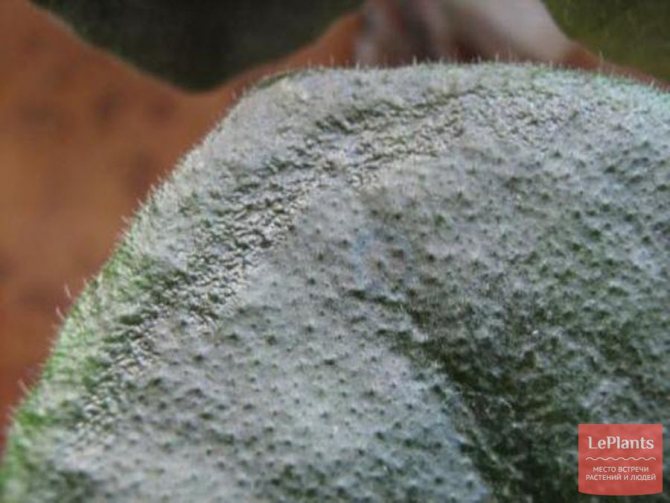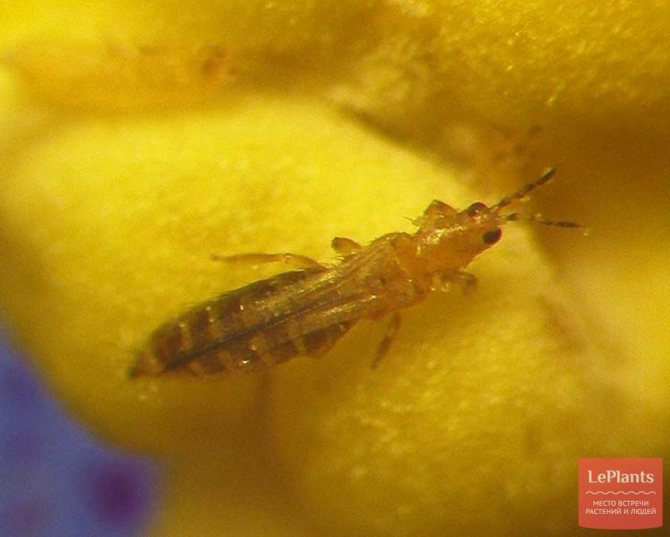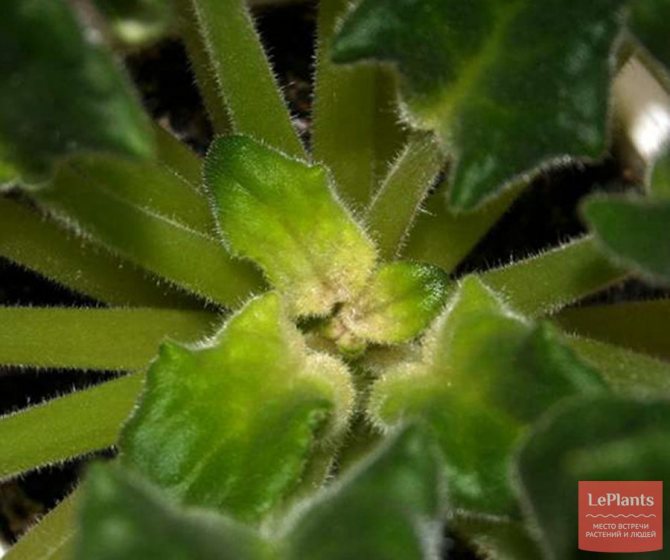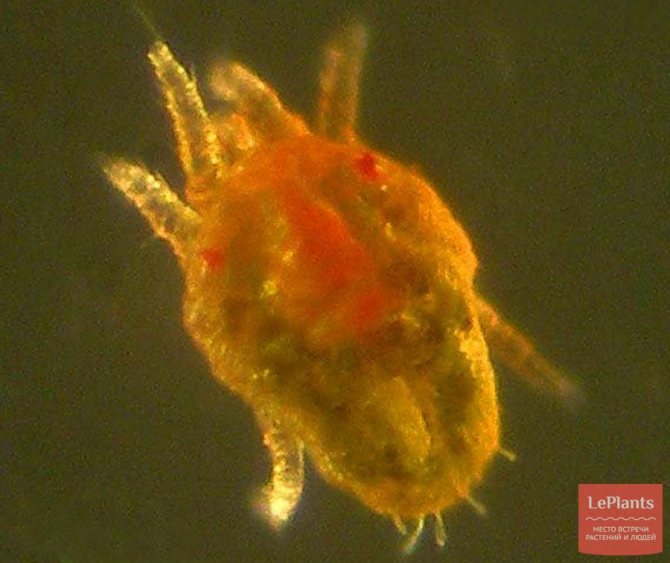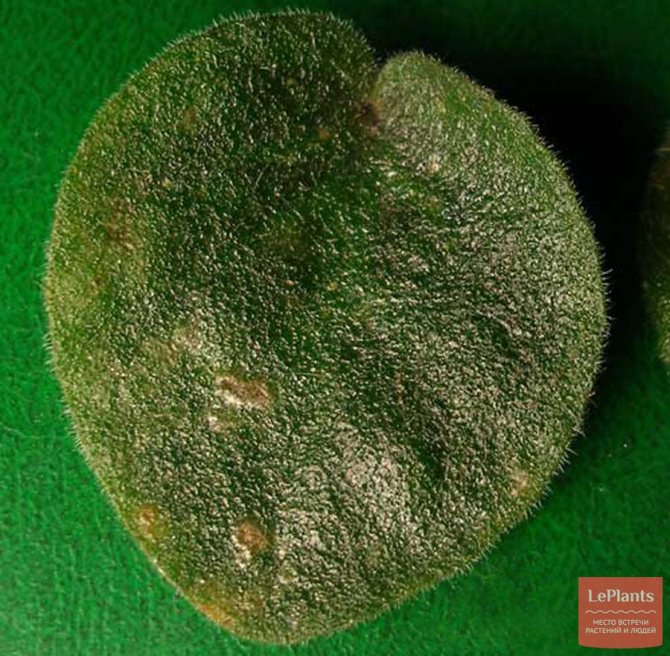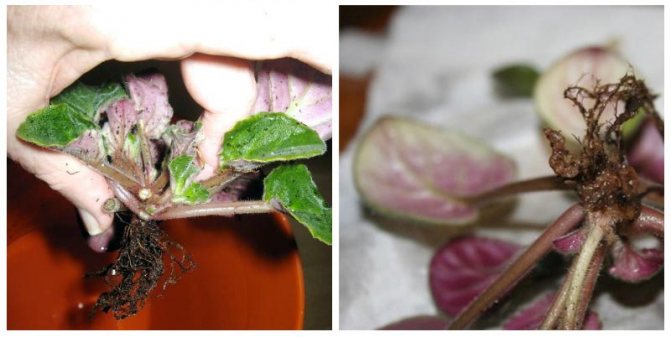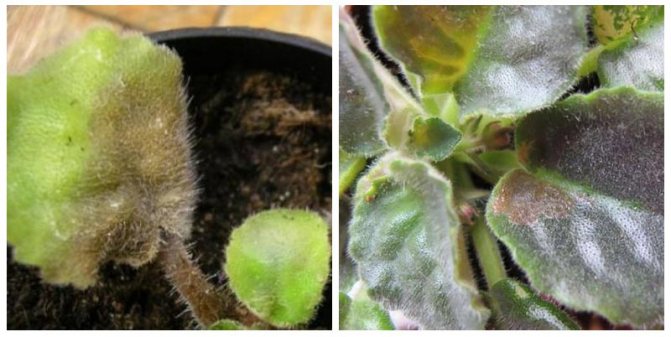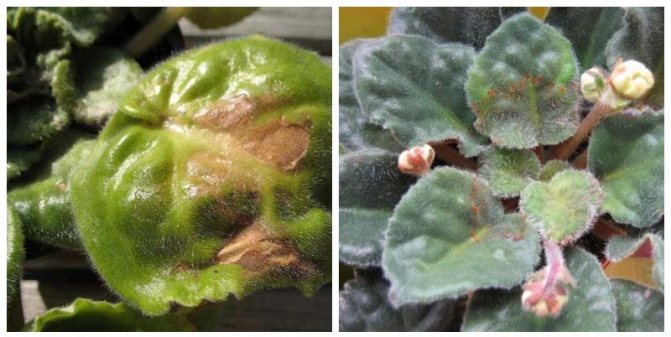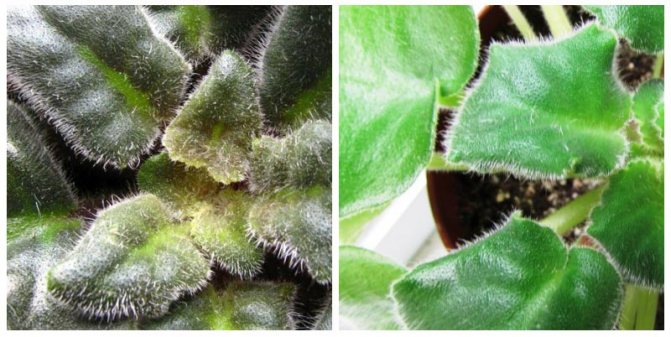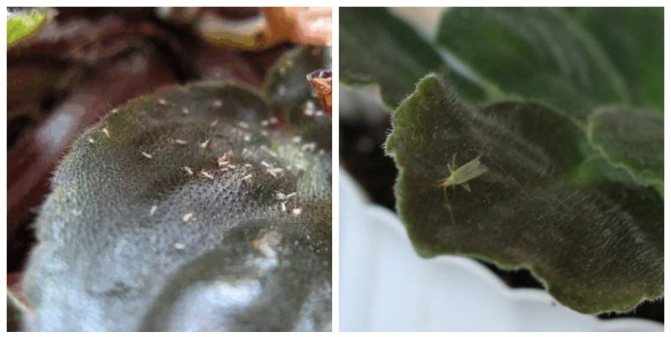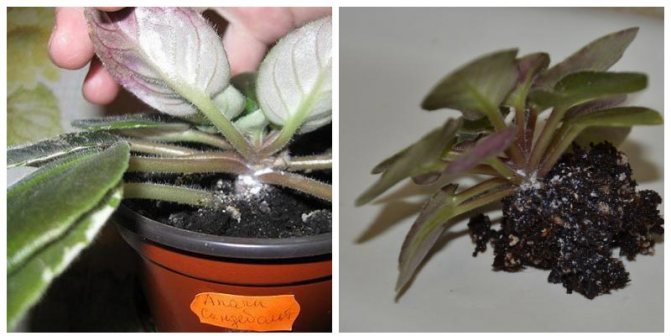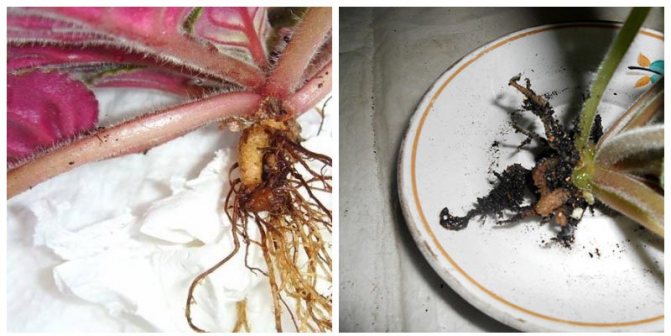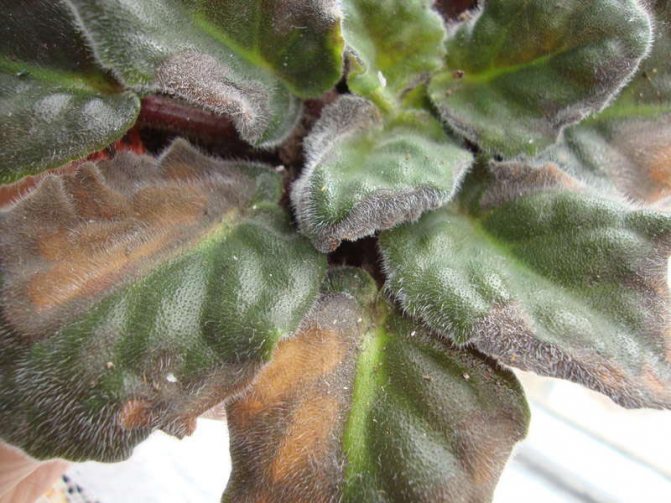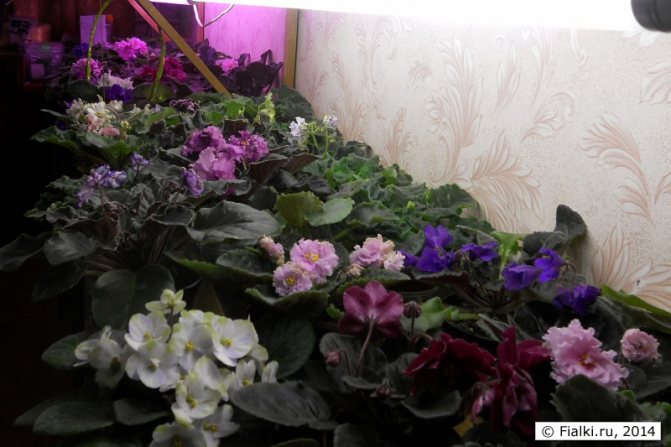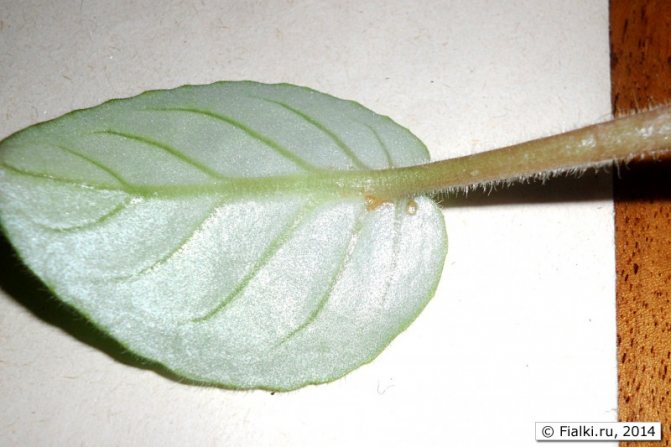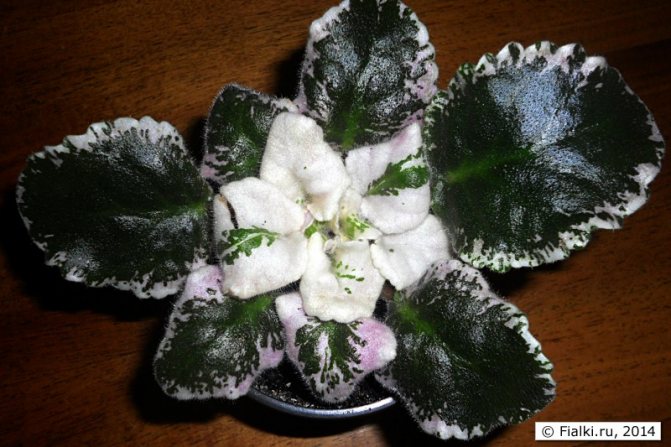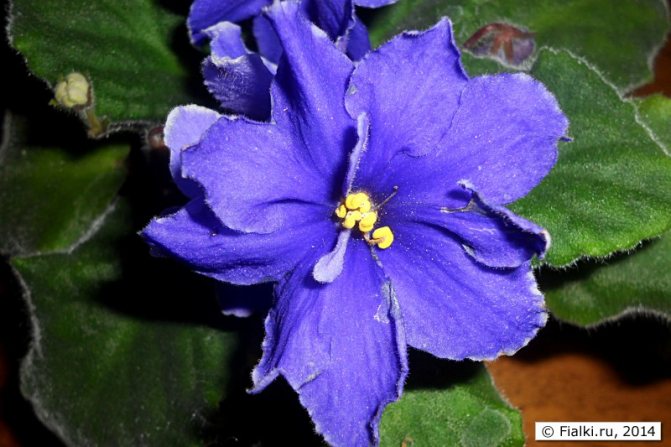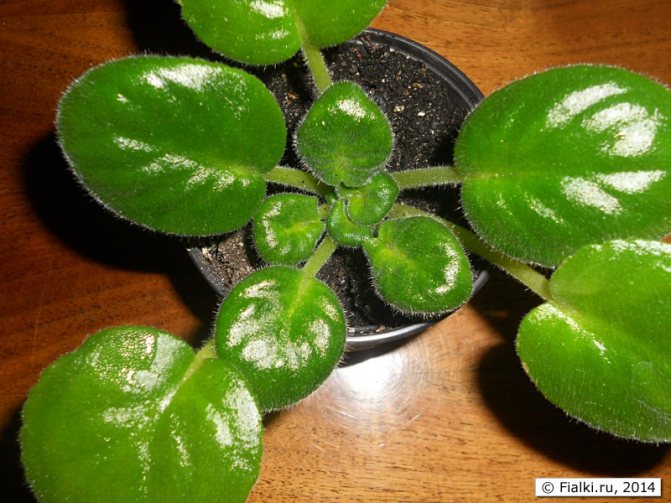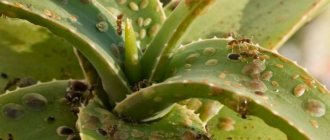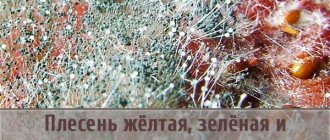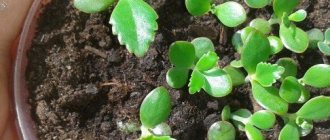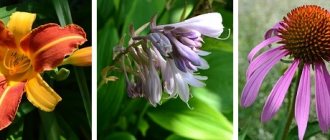Reasons for the appearance
Aphids are a natural inhabitant of the natural environment. It attacks the leaves of violets, preferring the inner side. The stems and flowers of plants are not ignored. Numerous small insects, not exceeding two millimeters in length, stick around the flowers, feeding on their sap.
The appearance of these insects on violets does not occur without a reason, and is associated with the conditions of growing crops. On flowers growing outdoors in the garden, insects appear in connection with the following circumstances:
- improper agricultural technology - untimely and poor-quality processing of crops, lack of care;
- aggressive environment in the growing zone - violation of the ecological system, the spread of ants that carry aphids and contribute to their reproduction.
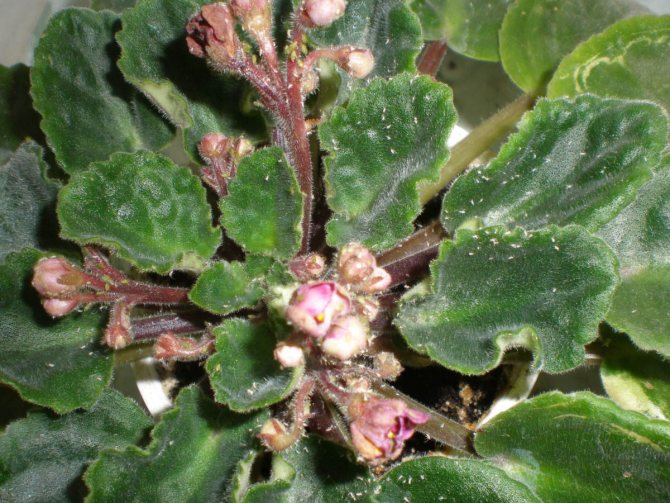
Pests, along with garden flowers, affect indoor ones. Insects are not confused by the limited number of objects of attack and the isolation of the environment.
It is difficult to completely exterminate aphids in the garden. The grower needs to regularly check the plants and take preventive measures to prevent the spread of pests. But in a situation with indoor flowers, it is easy to exterminate aphids completely and irrevocably.
Woodlice
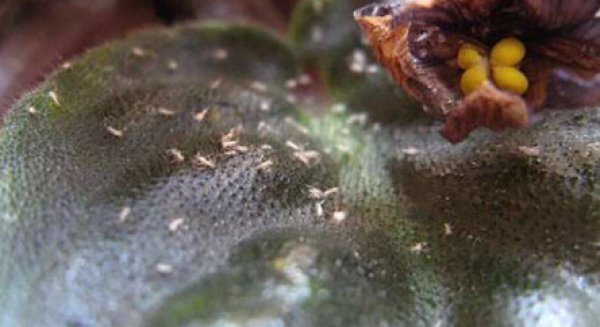

If ticks multiply when it's too hot, then woodlice like dampness. Probably everyone has seen these creatures, these are very small crustacean insects. Woodlice that appear on violets are most often white. They pose a great threat to young violets.
Woodlice appear in moist and loose soil, damaging the leaves and root system of violets. Do not be surprised if you see wood lice at your place, they could get to you from a damp basement. If you live in a house, then, probably, you yourself have often seen them. You can get rid of wood lice in the same way as from ticks, treat the violet with acaricide in accordance with the instructions.
Infection routes
Aphid infection occurs in the following ways:
- natural spread of insects in the process of reproduction and settlement. Pests migrate from surrounding crops - winged females fly from neighboring gardens, laying eggs;
- insects are brought by gardeners on seedlings of other plants planted on the site;
- with brought in soil containing laid larvae;
- by means of ants settling aphids and increasing the number of insects. Ants feed on the sticky sweet secretion secreted by aphids, so they treat it like a pet, transferring it to free plants and protecting it from the encroachments of competitors.
Pests are able to penetrate the closed ecosystem of indoor crops with a new flower, when replacing the soil. The mass reproduction of aphids makes it one of the most dangerous pests for garden and indoor plants.
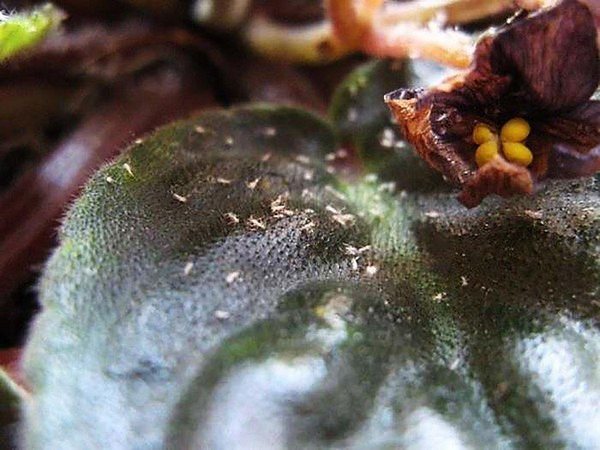

Photo
In the photo you can see what thrips look like.
Symptoms
Even a novice gardener can easily recognize an infection. The appearance of aphids can be recognized by the following characteristic features:
- general wilting of the plant;
- numerous white, black or green tiny dots on the inner and then the outer side of the leaves, stems, buds;
- a sticky liquid resembling sweet dew and covering the surface of a flower - subsequently, a sooty fungus settles in these areas of the plant;
- tiny white scales left over from hatched larvae;
- leaves curl, darken, become lethargic;
- the upper young shoots are deformed and dry up;
- the flowers take on ugly outlines, the violet stops throwing out new buds.
In addition to the direct harm associated with the loss of internal juices by the plant, aphid infection threatens the following unpleasant consequences:
- insects in the process of life secrete a sticky enzyme that contributes to the development of fungal diseases;
- attracting other pests - ants, ticks;
- the occurrence of viral diseases in horticultural crops.
With a strong infection, the plant stops blooming, withers, and after a few days it dies if the owner does not take emergency measures to combat the scourge.
How to tell if a violet is infected with thrips
Since thrips are one of the most common problems, you need to know and be able to recognize the main signs of their parasitism on Saintpaulias:
- pollen is actively crumbled on the flowers;
- the leaves begin to curl and lose elasticity;
- white or gray blotches, spots appear on the leaf plate;
- the buds fade, not having time to open, and the flowers wither and darken;
- a sticky bloom forms on the surface of the plant;
- the leaves darken and fall off.
Some of the signs above may indicate other problems as well. Therefore, if similar symptoms and signs appear, it is necessary to carefully examine the violet from all sides. This will allow the detection of either adults or their larvae.
How to fight at home?
The effectiveness of the measures depends on the timeliness of the treatment carried out and the scale of the infection. It is important to carefully and regularly inspect crops in order to start fighting at the first sign of pests.
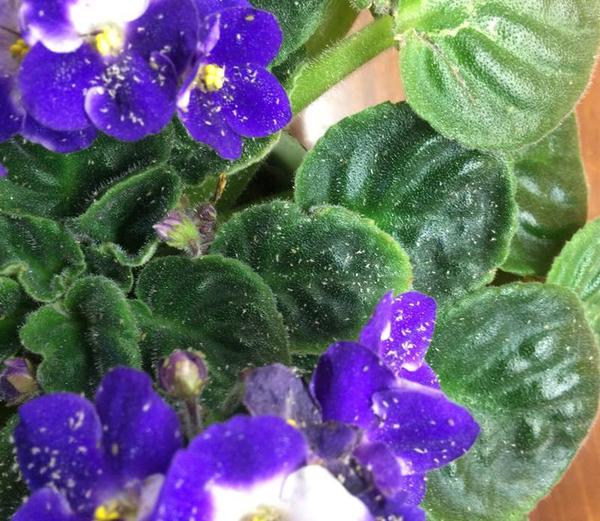

Control methods are selected taking into account the growing conditions of violets. Some chemicals are not suitable for indoor flowers due to their high toxicity, which is dangerous for people in a confined space. At the initial stage or as a preventive measure, folk remedies will help, but they will be powerless in the spread of pests. Considering that aphids are extremely fertile, when they appear on violets, there is a real threat to other plants in the garden or on the common windowsill in the room.
More details on how to deal with aphids on violets at home.
Mechanical removal
If pests are found, and the infestation has not yet become widespread, aphids can be removed mechanically:
- insects are collected by hand;
- the affected shoots break off;
- for indoor flowers - the leaves are washed with warm soapy water, the plant is dried in a warm place.
When the aphids are removed, the plant and the surrounding soil are treated using special means.
An alternative way to remove pests is to attract the natural enemies of aphids. This insect is present in the diet of ladybirds, hoverflies, some species of wasps, birds. Planted fruit shrubs and spicy varieties of herbs will help the gardener to attract them.
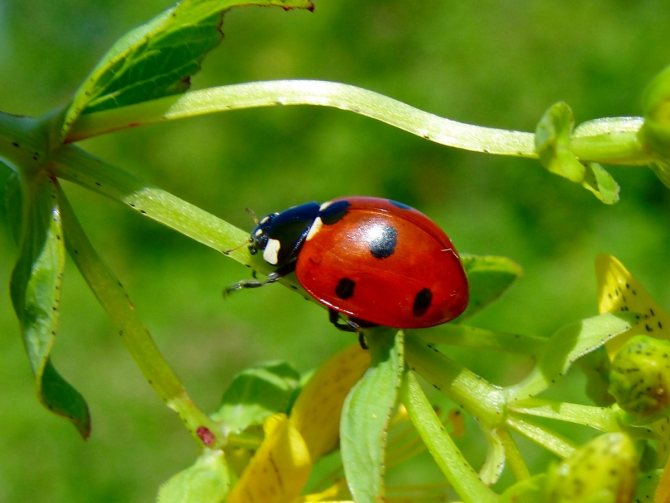

Use of biologics
The means offered by modern industry for the control and prevention of the appearance of aphids are divided into two groups:
- biological complexes - preparations created on the basis of natural components that repel and destroy pests;
- chemical compounds - artificial insecticides.
The main advantage of biological products is low toxicity, no harm to humans and domestic animals. The following biological agents are on sale:
- Fitoverm - acts in an intestinal contact way. In addition to aphids, it destroys other pests. The drug paralyzes insects, penetrating through the protective chitinous coating and with the juice of the treated plant.After eight hours, the pests die if indoor violets are processed. When processing a plant outdoors, it takes twice as long for the full effect of the drug. The tool is available in ampoules of two, four or five milliliters, in vials. Together with the flower, the adjacent soil is processed. After treatment, the agent works for two weeks. To fix the result, after the specified period, re-spraying will be required;
- Aktofit is a drug related to the previous one, created on the basis of a similar active substance. After treatment, the aphid loses its ability to feed after eight to twelve hours. The peak of the effectiveness of the action is reached after a week. Two treatments per season are enough to fully protect the plants. Produced in bottles and cans;
- Akarin is a related remedy with a similar mode of action. Diluted at the rate of two to three milliliters of the drug per liter of water. Violets and the soil under them are sprayed with the drug. After a couple of days, the insects completely die. Re-treatment after two weeks is necessary to destroy the pests that hatched from the larvae during the specified period;
- Arrivo is a biological preparation based on a different substance, but with a similar mode of action and conditions of use. It is produced in ampoules of one and a half milliliters, diluted in a bucket of water. The protection period of the treated plants is up to fourteen days.
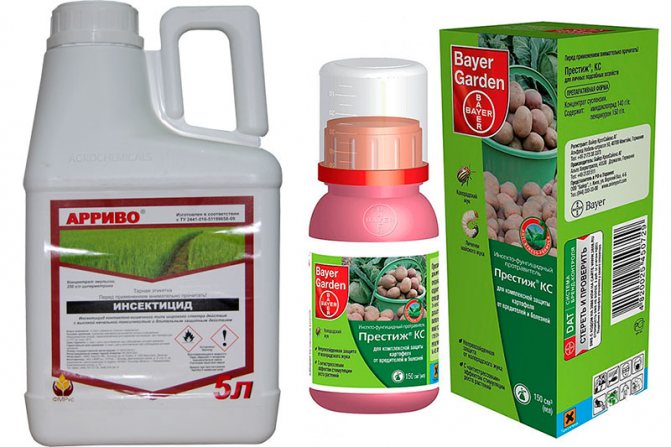

Biological products decompose quickly without causing environmental damage to the environment. When using most of the described products, there is a slight danger to bees for 24 hours after spraying.
Traditional methods
If the degree of infection has not yet reached alarming proportions, insects can be scared off with compositions prepared on the basis of folk recipes. These funds will help gardeners who grow indoor flowers if chemical or biological products are not available for sale during the winter season.
The described compositions can be made at home; So, what will help from aphids on violets, scare away pests:
- onion infusion - one hundred grams of onions is finely crumbled and poured with a liter of water. The product is infused for about eight hours in the dark and filtered. At least three treatments are carried out, every two days;
- garlic infusion - a similar amount of peeled and chopped garlic is mixed with fifteen grams of grated laundry soap. The mixture is infused in three liters of water for about two hours, filtered. The bushes are sprayed regularly until the expected result;
- garlic with tomato tops - tomato stalks with foliage are crushed, squeezed garlic (up to two teaspoons), a liter of water are added. It is applied after straining;
- celandine - dried and fresh herb is used. Three hundred grams of fresh flowers or one hundred - dried are poured with one liter of water. The composition is kept for up to thirty-six hours, boiled and filtered. The resulting agent is sprayed with infected violet bushes;
- tar soap - forty grams are ground and dissolved in four liters of water. The composition repels and destroys insects;
- wood ash - sifted powder in the amount of three hundred grams is poured with a liter of water and kept on low heat for up to half an hour. For processing, the concentrate is diluted in five liters of water and used cooled down.
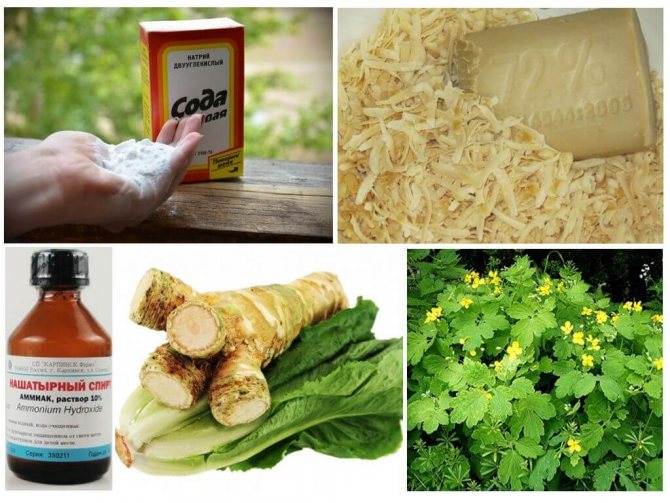

In order for folk remedies to act with greater efficiency, it is necessary to alternate the recipes used, depending on the reaction of the pests.
Chemicals
Modern industry produces effective selective chemical insecticides that eliminate aphids and other pests. These complexes work in three ways:
- intestinal - assimilated by the insect's body and poisoning it;
- contact - penetrating through the protective coating.Combined - enteric-action drugs are more often produced;
- systemically - accumulating in plant cells and treated soil.
The most famous drugs that can cure violets from the invasion of aphids:
- Inta-vir is a synthetic analogue of a plant insecticide. It is produced in powders and tablets, soluble in water and used by aerosol method. Aphids die three days after application;
- Tanrek is a systemic drug that suppresses the nervous system and kills insects, including larvae. To achieve the effect, a few hours are enough, the complete destruction of the infection occurs within a day;
- Bankol is an enteric-contact insecticide. Three grams of the product are dissolved in five liters of water to form a suspension, which is sprayed with flowers.
Chemicals affect aphids much more strongly than other compounds. But their use requires caution. Such drugs are more toxic than biological formulations and require fewer treatments.
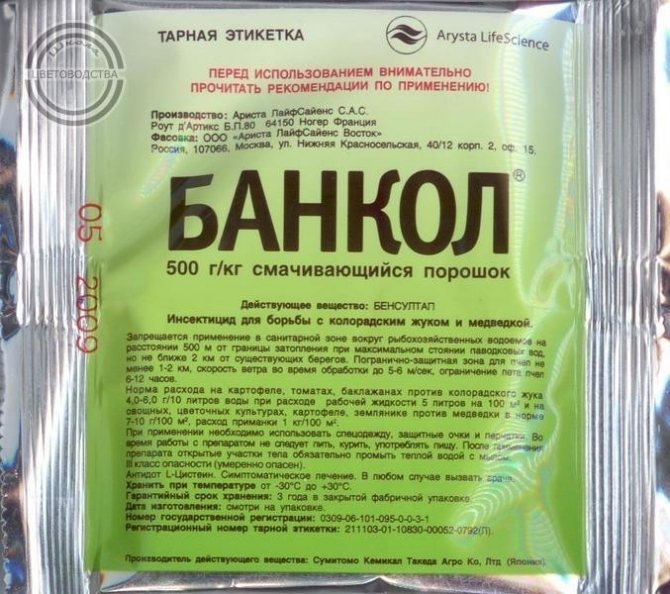

Folk methods of struggle
You can fix the result from insecticides with folk remedies... It is worth noting that these methods are suitable for enhancing the effect of drugs, but they cannot completely replace them, therefore, it is not worthwhile to base the treatment of plants entirely on folk remedies.
Liquid soap solution
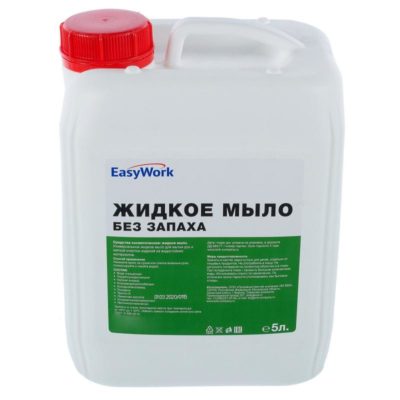

This is perhaps the most affordable way to fight parasites.
- A small amount of liquid soap is diluted in a liter of warm water.
- The whole plant should be sprayed with the resulting mixture: special attention to the leaves, they must be covered with a solution on both sides.
- Then the flower should be covered with polyethylene and after a few hours rinsed with running water.
Garlic tincture
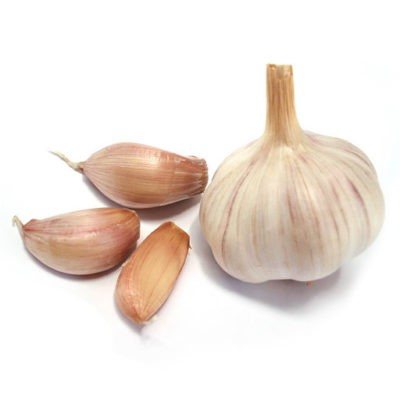

A few cloves of garlic are chopped, poured with hot water and left to infuse for a day.- The resulting infusion is then sprayed onto the stems and leaves of the infected plant.
The second option for this remedy: place the finely chopped garlic itself near the plant and cover it with polyethylene for several hours so that the smell of garlic will neutralize the parasites.
Herbal infusions are also effective in the fight against thrips.
Celandine
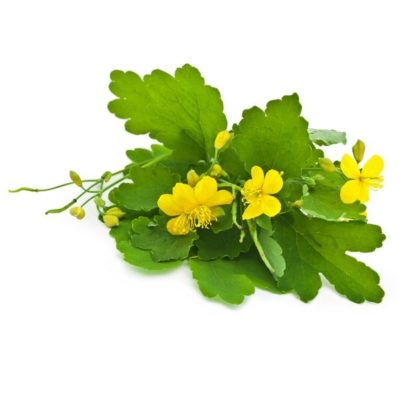

The most effective will be to use fresh leaves during the flowering of celandine., but dried ones will do an excellent job.
- About three hundred grams of finely chopped leaves are poured with a liter of hot water.
- Then they insist for two days.
The resulting infusion is toxic, so it will easily exterminate parasiteshowever, precautions should be taken when handling it.
Infusion of marigolds
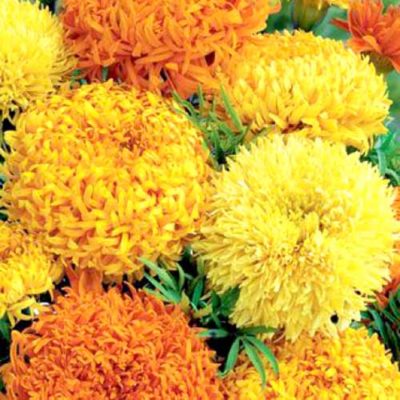

For this tool, you will need about 100 grams of crushed marigold flowers.
Preparation:
- Pour the flowers of marigolds with a liter of hot water, bring the resulting mixture to a boil and boil for a couple of minutes.
- After that, insist for three days.
For use, the infusion is filtered through cheesecloth, after which it is sprayed onto infected plants, paying particular attention to the leaves and flowers.
Prevention of plants
Reasonable prevention will prevent the appearance and reproduction of aphids on violets. The grower will prevent infection by taking the following preventive measures:
- regular inspection of violets and other plants for the presence of pests;
- removal of dried shoots and lower leaves, from which the aphid spreads to the rest of the flower;
- fighting ants that carry pests;
- planting violets on fertilized soil, in lighted and ventilated places;
- for indoor crops - do not place cut flowers brought from the street next to them, keep newly acquired plants separately for a certain time to control the absence of infection.
Careful care and adherence to agricultural practices will ensure the health and normal development of plants.If aphids start, the infection will be detected at an early stage, it will be possible to take adequate measures in time.
Don't underestimate the danger of these insects. But if the proper measures are taken in a timely manner, the plants will be saved and the pests will be destroyed.
Whitefly
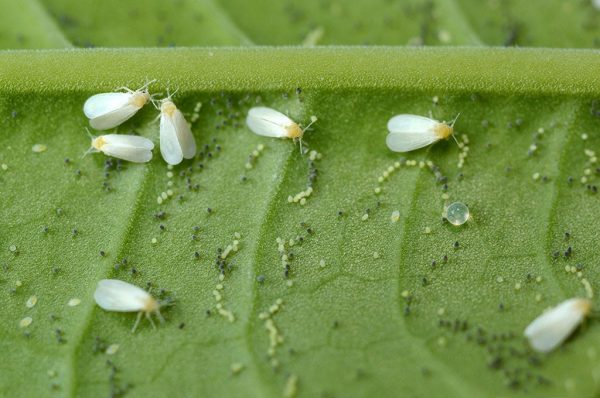

Whitefly is a small insect with white wings that look like a small fly. Their larvae are in the form of very small grains. They appear when the room is almost not ventilated, and the atmosphere in the room is humid and warm.
The big threat is not the whiteflies themselves, but their larvae, as they suck juice from the leaves. Also, the larvae secrete a sticky mixture that promotes the development of fungus on young violet leaves. In turn, the sooty fungus causes the plant to stop sprouting. Other signs of whitefly damage to violets is the loss of decorativeness, as well as folding and wilting of leaves. Whitefly contributes to the multiplication of bacterial diseases.
To combat this pest, violets should be regularly sprayed with permethrin-containing preparations every 3 days. It is necessary to rinse the plant, before each spraying, special attention should be paid to the underside of the leaf. Also, systemic insecticides are very effective, but they need to be used several times at intervals of 10 days.
Legs, puffs
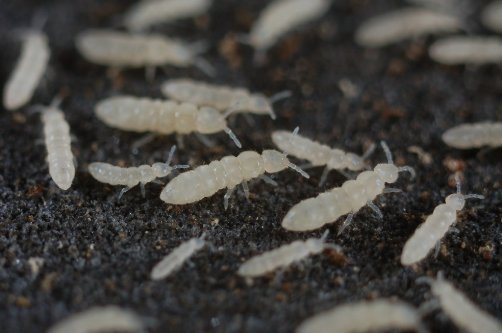

Another name for earthen fleas, small jumping insects, live in the ground and feed on fungal spores and decaying organic matter.
A small population of podura does not harm the plant, but when there are a lot of them, they begin to feed on small violet roots. They multiply quickly if the soil in the pot is damp.
To combat springtails, it is enough to dry the ground and treat the soil with a systemic insecticide.
Description and differences
Cyclamen or strawberry mites (Latin Phytonemus pallidus) differ in their smallest size (100-250 microns), so they can only be viewed with a microscope. According to the classification, they do not belong to insects, but to arthropods of the arachnid class.
Ticks have a translucent light yellow body and 4 pairs of legs; they live on young shoots of green shoots and in buds. Their main diet is plant cell sap. In addition to indoor flowers, they also affect the bushes of garden strawberries and wild strawberries, for which they received their second name.
Ticks are able to multiply very quickly: each female lays 12-16 eggs daily, of which larvae appear within 3-7 days, they quickly mature and turn into adults in a week, ready to reproduce further.
On a note!
The most important stimulant for their reproduction is dry air and warmth, which are a favorable environment for development. Therefore, the peak activity of cyclamen ticks occurs during dry hot weather in the summer months and during the heating period in winter.
How to get rid of aphids on indoor plants using chemicals
Fitoverm
The most recommended drug for aphid control is Fitoverm, which has a minimal degree of danger to pets and children. The insecticide solution should contain approximately 1 ml of active ingredient for every 100 ml of water. In no case should spraying the affected plant be carried out every day; at least 5-7 days should pass between treatments. In a normal situation, 2-3 sprays are enough to get rid of aphids.
Aktara
Aktara, being a more powerful insecticide, has more side effects than Fitoverm, but it also copes with pests much faster. To spray a plant with a spray bottle in 1.25 liters of water, dilute 1 gram of Aktara. This solution is enough for several affected plants. They also make another solution: 1 gram is dissolved in 10 liters of water, and the soil is spilled with this mixture.It is not necessary to wash off the insecticide from the flower. In this case, one and a half to two weeks should pass between spraying, more frequent procedures can only harm the plant. The combination of watering and spraying leads to a noticeable result after a couple of procedures.
Actellik
The drug "Actellik" is a very powerful insecticide, used only in case of severe damage to the plant by aphids. The use of "Actellika" implies being in the open air. Contraindications for the use of this drug are:
- asthma;
- allergy;
- pregnancy.
The solution is made from 1 ampoule of insecticide and 1 liter of water. The flower must be processed after 10-11 days, provided that the average room temperature is 17-20 °, every 8-10 days, if the temperature is below 15 °, every 7-8 days, if the average room temperature is 23-24 ° , every 5–6 days if the temperature exceeds 25 °. At the same time, if the temperature does not exceed 18 °, the efficiency of Actellik is greatly reduced. It is necessary to re-treat the plant with an insecticide at a certain time, since a single spraying will give only a temporary result.
In addition, there are general rules for working with insecticides:
- since aphids are extremely mobile and easily infect new territories, if a pest is found, it is necessary to process all plants indoors;
- the skin, respiratory organs, mucous membranes must certainly be protected, after the procedure, hands and face must be washed;
- after treatment with an insecticide, direct sunlight should not fall on the plant, since spraying with chemicals greatly weakens the plant;
- for greater effect, it is advised to add soap to any solution.
Celandine treatment
You can use a plant such as celandine. The way to use it is as follows:
- collect blooming celandine in an amount of 300 g raw or 100 g dry;
- pour the grass with a liter of water;
- insist for 36 hours, you can boil for half an hour;
- spray the affected leaves with the resulting solution.
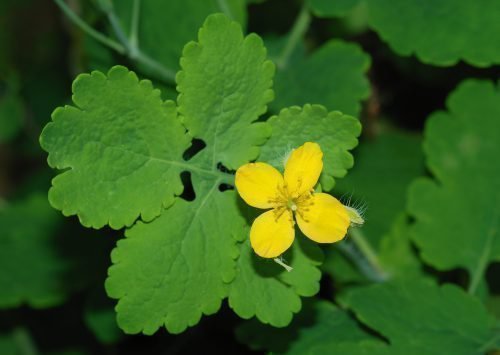

Celandine in the form of a tincture or decoction helps against aphids
Using infusion of onions
Effectively acts on aphids onion infusion. To do this, finely chop the onion (100 g) and infuse it in a liter of water for 7 hours. The dishes should be closed tightly. After that, the infusion is filtered and the affected flower leaves are treated with it.
You can prepare decoctions from plants such as tansy, wormwood, hot pepper, potato and tomato tops, mustard, dandelion, rhubarb. The latter also helps well against black aphids. Plants are processed 3 times every 7 days.
How to spray from pests
There are a number of pesticides that are used to control pests in the open field, but it is highly undesirable to use them at home. However, if you still have to use them, then the plant pots are best taken outside. To get rid of thrips will help drugs such as:
- Mospilan.
- Intavir.
- Fitoverm.
- Aktara.
After seven to ten days, repeat the spraying. This must be done to consolidate the result.


